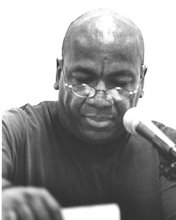Robert Philen has another very insightful piece on his always fascinating blog on the questions of accessibility and difficulty in art and their relationship to artistic quality, in which he makes the point that neither attribute has any intrinsic relationship to artistic quality; nor does a work's relative popularity or obscurity determine or even indicate its quality. Philen argues against the common assumptions either that a work which is accessible and/or popular is thereby good (this viewpoint usually dismisses more difficult work as "elitist" or "exclusionary") or that a work which is difficult and/or obscure is therefore good (this viewpoint usually dismisses more accessible work as meretricious at worst, at best not to be taken seriously).
As Philen writes, "What I’d like to most emphasize here is that when it comes to artistic expression, accessibility/difficulty is an important quality (or really a set of qualities, given different varieties of difficulty) which is independent of the aesthetic merits of a work, that is, independent of whether a work manifests something profound or beautiful, independent of whether a work successfully unifies the concrete and universal, the timely and timeless (see my recent post, "Great Art, Timeliness, and Timelessness").
"This is actually a fairly simple and straightforward point, but I make it in opposition to common claims or assumptions that either accessibility or difficulty signal either good or bad art.
"Similar assumptions are often made with regard to a related quality of creative expression--its popularity or obscurity (like accessibility and difficulty, these are simply inverse ways to regard the same basic quality). (These qualities are related not in that most accessible art is particularly popular nor that most obscure art is necessarily difficult. For that matter, a work’s level of popularity or obscurity can change over time without its level of difficulty particularly.... Instead, the relationship between accessibility/difficulty and popularity/obscurity is more that most popular works tend to be relatively accessible and most difficult works tend to be more obscure...."
I encourage everyone to read this clear-minded piece that cuts through the fog of assumptions and presumptions in which many who write about the arts operate.
Subscribe to:
Post Comments (Atom)



2 comments:
The concept of difficulty and accessibility often assumes that there is some kind of meaning to be decoded, narrative to be understood, or representation to be apprehended.
But many of the champions of "difficult" poetry explicitly reject these ideas (or consider them to be old, quaint, out-of-date) in favor of a completely different kind of poetics. If the quaint ideas of representation are Rembrandts and the relatively more difficult modernists and such are Picassos, then they claim a poetics that is akin to Rothko and Pollock.
How is "difficult" or "accessible" conceived in this kind of art? Is a Pollock (an artist that I intuitively admire) more or less difficult or accessible than his inferiors or the random dabblings of the child (or the skeptic)?
It *feels* like many of those in the post-avant crowd are not supporting difficulty and accessibility but a kind of art in which those terms don't apply (and an art that I admittedly don't get). Clark Coolidge, for example, is someone I've been reading recently thinking about these concepts... or at least trying to read. I don't think I know *how* to read his work... I'm not even sure reading is the right word of denotation, representation, meaning, etc are not in play.
徵信社
徵信
Post a Comment